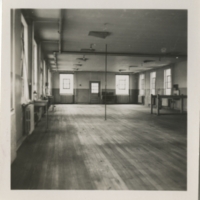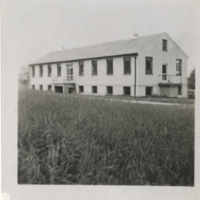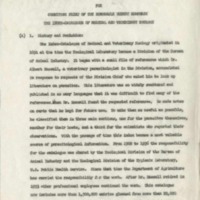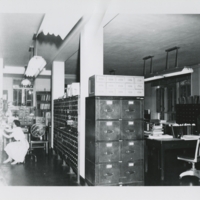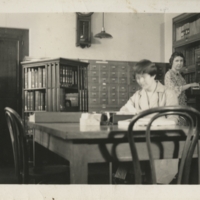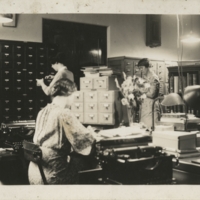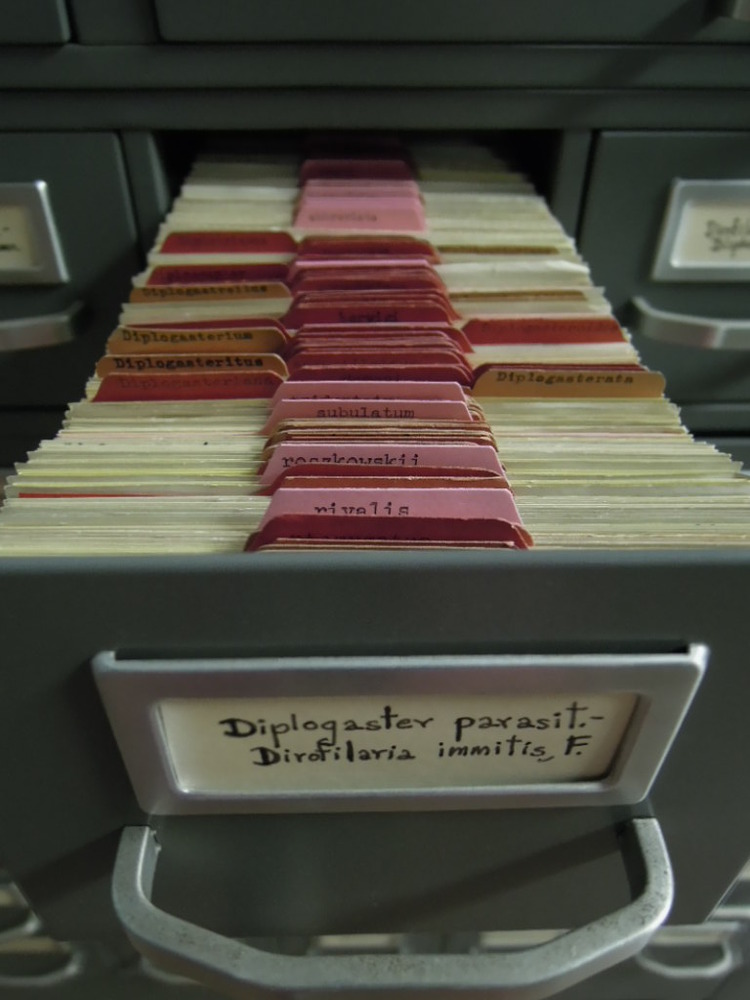Index-Catalogue of Veterinary and Medical Zoology
Albert Hassall records the first entries
In 1891, veterinary parasitologist Albert Hassall devised a way to keep track of the scientific literature that he and his colleague, Charles Wardell Stiles, consulted in their parasitology research for the Bureau of Animal Industry. The literature in their field was published in many languages and was frequently difficult to find. Hassall took notes on index cards about the sources he found to ensure that he could readily find them for future use. To make the references as useful as possible, he created three sets of cards—one for the parasite subjects of the studies, another for the parasites’ hosts, and a third for the authors. Eventually, Hassall and his colleagues built a large index of the world’s published literature on human and animal parasitology.
Hassall’s reference work was called the Index-Catalogue of Medical and Veterinary Zoology. At first this work benefited the staff members in the Zoological Laboratory of the Bureau of Animal Industry. As parts of the Index-Catalogue were published and distributed, it became an indispensable reference tool to scientists across the U.S. and abroad. In 1922, London’s Royal College of Veterinary Surgeons awarded Hassall the Steele Medal for distinguished service to veterinary medicine in recognition of the valuable contribution his Index-Catalog had made to the study of veterinary science.
USDA and the U.S. Public Health Service join forces
As the tremendous value of Hassall’s Index-Catalogue became recognized by parasitologists worldwide, the Bureau of Animal Industry’s Zoological Division partnered with the U.S. Public Health Service’s Hygienic Laboratory to update and expand it. The two institutions shared responsibility for maintaining the Index-Catalogue from 1902 to 1936.
The library of the USDA and the library of the Surgeon General of the United States (later called the National Agricultural Library and the National Library of Medicine, respectively) assisted the researchers with finding thousands of published works. Hassall and the Zoological Laboratory’s professional staff also gathered reports from agricultural experiment stations, state departments of agriculture, foundations, councils, conventions, and scientific expeditions. The painstaking work of seeking and verifying references took them far and wide, to institutions throughout the U.S. and in other countries.
Publishing the Index-Catalogue
The author section was the first part of the Index-Catalogue to appear in print. It was published in 36 installments by the Department of Agriculture, starting with Bureau of Animal Industry Bulletin 39. After that, additional sections were published by the U.S. Public Health Service (later the National Institutes of Health).
The Index-Catalogue eventually grew to more than 1.5 million entries gathered from over 22,000 publications in 33 languages. Between 1932 and 1982, over 100 installments to the Index-Catalogue were published. A complete set of the 1932-1982 publications is digitized and searchable on the Texas A&M University library's website. Original index cards still exist and are preserved at the National Agricultural Library in Beltsville, Maryland. They occupy over 2,100 linear feet of drawer space in card file cabinets. Researchers may view items from the card file by making an appointment with NAL's Special Collections staff.
Resources
“Index-Catalogue of Medical and Veterinary Zoology.” n.d. U.S. National Animal Parasite Collection Records. Box 98, Folder 3. Special Collections, National Agricultural Library.
“Report of the Parasite Identification and Distribution Investigations Research Group for Committee Print of the Honorable Hubert Humphrey: The Index Catalogue of Medical and Veterinary Zoology.” 1959. U.S. National Animal Parasite Collection Records. Box 98, Folder 3. Special Collections, National Agricultural Library.
Schwabe, Calvin W. 1981. “A Brief History of American Parasitology: The Veterinary Connection between Medicine and Zoology.” In The Current Status and Future of Parasitology: Report of a Conference Sponsored Jointly by The Rockefeller Foundation and the Josiah Macy, Jr. Foundation, edited by Kenneth S. Warren and Elizabeth F. Purcell, 21–43. New York: Josiah Macy, Jr. Foundation.
 An official website of the United States government.
An official website of the United States government.

